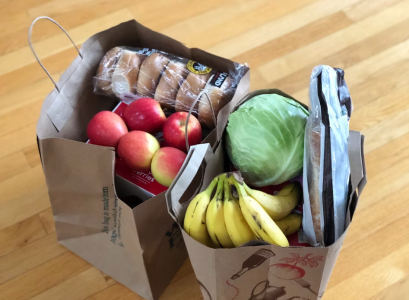You won’t believe these 13 everyday things you’re now paying for—they used to be free!
- Replies 0
Remember the good old days when a smile, a handshake, and a few everyday conveniences didn’t come with a price tag?
You probably recall when grocery trips included free bags, hotels gave guests unlimited access to pools and Wi-Fi, and a flight meant you could enjoy a meal without opening your wallet.
Today, many of those once-ordinary conveniences now show up as extra charges on your bill.
It may not seem like much at first glance, but together these costs are eating away at everyday budgets.
Now, in over 100 US cities, you’ll pay a fee for every plastic or paper bag you use.
The goal? To cut down on single-use plastics and encourage reusable totes. Boulder, Colorado, for example, saw a whopping 70% drop in plastic bag use after introducing the fee, and the city has raised over $1 million for community programs.
Good for the planet, sure—but it’s another line on your receipt.
Now, resort fees are everywhere—even at budget hotels. In 2023, the average US resort fee was $38.82 per night.
The FTC has tried to crack down on these sneaky charges, but enforcement is spotty.
So, next time you book a room, read the fine print—or risk paying extra for that morning swim.
Many restaurants now charge for extra sauce packets. Taco Bell, for instance, gives you one avocado verde salsa with certain menu items, but if you want more, it’s 20 cents a pop.
Now, many stations charge around $1.50 for a few minutes of compressed air.
The reason? Maintenance and energy costs, say station owners. Some states still require free air if you buy gas, but you might have to hunt for those stations.
Pro tip: Check your state’s laws before you pay!
Then came cable, then streaming, and now even free TV comes with a catch—ads on your smart TV’s home screen, screensavers, and even the remote.
The average American now spends $46 a month on streaming services.
And with every new platform, it seems like the “free” part of TV is shrinking faster than your favorite sitcom’s runtime.
But after 9/11, airlines slashed costs, and free meals disappeared from most domestic flights.
Now, unless you’re in first class, you’ll pay for anything more than a bag of pretzels.
So, pack a snack or prepare to pay sky-high prices for a sandwich.
Now, it means you’re paying a monthly fee—$7 and up for X, with similar charges on Meta platforms.
Some celebrities got their checkmarks back for free in 2024, but for most, online status comes with a subscription.
Now, uninsured Americans may pay $150–$200 for the latest shot at their local pharmacy.
Some programs still offer free vaccines, but you’ll need to check eligibility and availability.
Royal Caribbean, for example, now charges $7.95 per order, plus gratuity. That midnight snack just got a little less tempting.
MagicBands (which store your tickets and room keys), resort parking, and FastPasses (now Genie+), once included, now come with a fee.
The happiest place on earth? Maybe, but your wallet won’t be smiling.
Also read: Essential financial resources for seniors: 25 programs that can help
While this hasn’t hit the US in a big way yet, it’s a sign of things to come.
Next time you buy a shirt, don’t be surprised if the hanger costs extra.
That changed in the 1970s, and now, if you can even find a carrier that offers it, you’ll pay a fee.
Most just Google it now, but it’s another example of a once-free service that’s now pay-to-play.
Today, the average fee is $4.77 per transaction. That’s a lot to pay just to get your own money!
Read next:

What do you miss most from the days of freebies? Have you found clever ways to dodge these new charges? Or is there something you’re still getting for free that you’re sure will cost money soon?
You probably recall when grocery trips included free bags, hotels gave guests unlimited access to pools and Wi-Fi, and a flight meant you could enjoy a meal without opening your wallet.
Today, many of those once-ordinary conveniences now show up as extra charges on your bill.
It may not seem like much at first glance, but together these costs are eating away at everyday budgets.
1. Grocery Bags: The Price of Convenience
Once upon a time, the cashier would bag your groceries with a smile and a “Have a nice day!”Now, in over 100 US cities, you’ll pay a fee for every plastic or paper bag you use.
The goal? To cut down on single-use plastics and encourage reusable totes. Boulder, Colorado, for example, saw a whopping 70% drop in plastic bag use after introducing the fee, and the city has raised over $1 million for community programs.
Good for the planet, sure—but it’s another line on your receipt.
2. Hotel Amenities: The “Resort Fee” Racket
Remember when your hotel room rate included the pool, gym, Wi-Fi, and maybe even a newspaper at your door?Now, resort fees are everywhere—even at budget hotels. In 2023, the average US resort fee was $38.82 per night.
The FTC has tried to crack down on these sneaky charges, but enforcement is spotty.
So, next time you book a room, read the fine print—or risk paying extra for that morning swim.
3. Extra Sauce: The Condiment Conundrum
Craving a little more ketchup or that special avocado salsa at your favorite fast-food joint? Get ready to pay up.Many restaurants now charge for extra sauce packets. Taco Bell, for instance, gives you one avocado verde salsa with certain menu items, but if you want more, it’s 20 cents a pop.
4. Air for Your Tires: Not So Free-Wheeling
It used to be that you could pull into any gas station and fill your tires with air for free.Now, many stations charge around $1.50 for a few minutes of compressed air.
The reason? Maintenance and energy costs, say station owners. Some states still require free air if you buy gas, but you might have to hunt for those stations.
Pro tip: Check your state’s laws before you pay!
5. Television: The Cost of Free Entertainment
Once, the only price you paid for TV was sitting through commercials.Then came cable, then streaming, and now even free TV comes with a catch—ads on your smart TV’s home screen, screensavers, and even the remote.
The average American now spends $46 a month on streaming services.
And with every new platform, it seems like the “free” part of TV is shrinking faster than your favorite sitcom’s runtime.
6. In-Flight Meals: The Mile-High Menu Markup
If you flew before 2010, you might remember getting a hot meal on your flight—no extra charge.But after 9/11, airlines slashed costs, and free meals disappeared from most domestic flights.
Now, unless you’re in first class, you’ll pay for anything more than a bag of pretzels.
So, pack a snack or prepare to pay sky-high prices for a sandwich.
7. Social Media Verification: The Blue Check Blues
Once, a blue checkmark on Twitter (now X) or Instagram meant you were a public figure or journalist.Now, it means you’re paying a monthly fee—$7 and up for X, with similar charges on Meta platforms.
Some celebrities got their checkmarks back for free in 2024, but for most, online status comes with a subscription.
8. COVID-19 Vaccines: From Free to Fee
During the pandemic, the US government made COVID-19 vaccines and boosters free for everyone. But as funding dried up, so did the freebies.Now, uninsured Americans may pay $150–$200 for the latest shot at their local pharmacy.
Some programs still offer free vaccines, but you’ll need to check eligibility and availability.
9. Room Service on Cruises: Anchors Aweigh, Wallets Out
Cruise ships are famous for tacking on fees, but now even room service—once a complimentary treat—comes with a charge.Royal Caribbean, for example, now charges $7.95 per order, plus gratuity. That midnight snack just got a little less tempting.
10. Disney World Perks: The Magic (Band) Isn’t Free
A trip to Disney World has always been pricey, but now even the little perks cost extra.MagicBands (which store your tickets and room keys), resort parking, and FastPasses (now Genie+), once included, now come with a fee.
The happiest place on earth? Maybe, but your wallet won’t be smiling.
Also read: Essential financial resources for seniors: 25 programs that can help
11. Hangers: Hanging on to Your Change
In the UK, Tesco started charging about 13 cents for hangers with clothing purchases, hoping to cut down on plastic waste.While this hasn’t hit the US in a big way yet, it’s a sign of things to come.
Next time you buy a shirt, don’t be surprised if the hanger costs extra.
12. Directory Assistance: 411, What’s the Charge?
If you ever dialed 411 for a phone number, you might remember when it was free.That changed in the 1970s, and now, if you can even find a carrier that offers it, you’ll pay a fee.
Most just Google it now, but it’s another example of a once-free service that’s now pay-to-play.
13. ATM Service: The Surcharge Shuffle
The first ATMs were for bank customers only, but by the late 1980s, banks started charging fees for out-of-network withdrawals.Today, the average fee is $4.77 per transaction. That’s a lot to pay just to get your own money!
Read next:
- These 15 nostalgic items used to be everywhere—now they could land you in real trouble
- The surprising items retirees still hold on to—and why it may be time to let them go
Key Takeaways
- Many everyday items and services that were once free, such as grocery bags, hotel amenities, and in-flight meals, now come with additional fees.
- Environmental reasons and cost-saving measures are driving some of these changes, like fees for single-use plastic bags and extra condiment packets at restaurants.
- The cost of digital conveniences has also increased, with features like social media verification badges and streaming TV now requiring monthly payments.
- Even essential or previously complimentary services—such as COVID-19 vaccines for the uninsured, room service on cruises, and ATM withdrawals outside your bank—often now attract significant charges.







